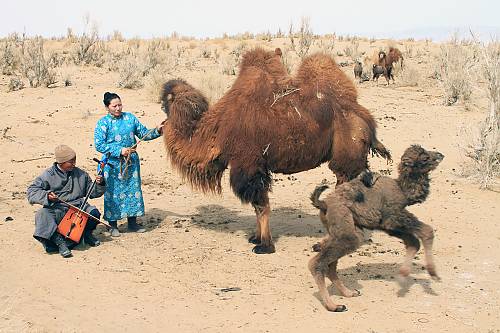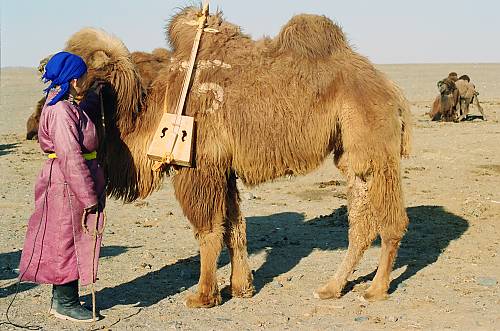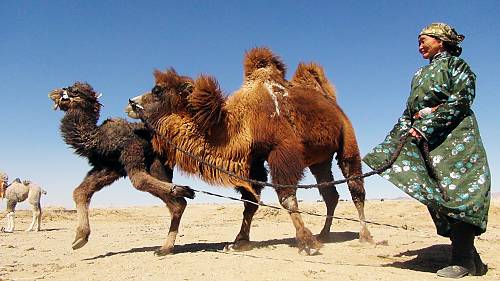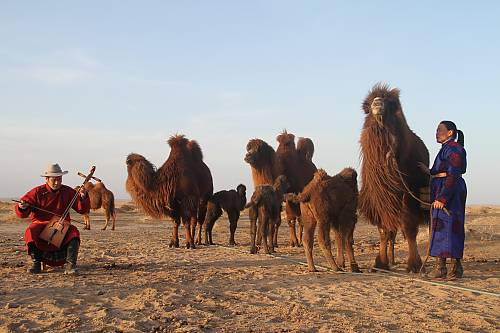Nomination file
- Nomination form: English|French
- Consent of communities: Mongolian/English
- ICH inventory: English/Mongolian
Decision
Inscription: 10.COM 10.a.5
Periodic reporting
Coaxing ritual for camels
Inscribed in 2015 (10.COM) on the List of Intangible Cultural Heritage in Need of Urgent Safeguarding
Mongol herders perform the coaxing ritual to encourage a female camel to accept a new-born calf or to adopt an orphan. The mother is tied close to the calf and a singer begins a monotone song accompanied by gestures and chanting. The coaxer changes the melody depending on the mother’s behaviour, which may be initially aggressive, and slowly coaxes her into accepting the calf. Performance of the ritual takes place at dusk or twilight and requires great skill in handling camels, as well as talent for singing and musical skill on the horse head fiddle or flute. Most herdswomen engage in techniques and methods of coaxing, but professional coaxers may be enlisted to undertake the ritual when a singer or musician is unavailable within the local community. The ritual acts as a symbolic medium for creating and maintaining social ties among individual nomadic families and their community. It is transmitted from parents and elders to youth through home tutoring. Changes in the social and cultural environment, however, have negatively affected its viability. Today, motorcycles are preferred to camels as a means of transportation, and increasing migration to urban centres has diminished the number of young herders. The number of cultural bearers is therefore decreasing rapidly as new generations lose touch with their traditional ties to pastoral husbandry.









